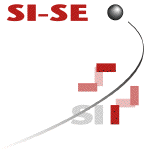|
Key
Note Nr. 1: Model-Driven Business Process Platforms
David Frankel, Standards Architect for Model-Driven Systems at SAP
Labs, Chico, CA, US
Business process platforms raise the abstraction level of software platforms to new heights, thereby enabling a new generation of model-driven tools that empower business process experts to facilitate the enactment of innovative business processes.
The transition to the full model-driven business process platform vision will be gradual. There are several key challenges in scaling business process platforms up. This presentation describes the challenges and suggests how the industry can address them.
Key
Note Nr. 2: Why Good Architecture Matters for SOA, and How to Achieve
it
Alan Brown,
Distinguished Engineer, IBM Software Group, Rational, USA
Customers are adopting Service Oriented Architectures (SOA) in their enterprise as a way to create composite applications from collections of disparate services. In taking a service-oriented approach, a key goal is to bring greater agility, productivity, and reuse to the development and evolution of those composite applications. However, these benefits will not be achieved simply by introducing a new technology infrastructure. Current software development patterns and practices must evolve to help create the flexible architectures required to achieve the goals of SOA. This presentation will introduce some of the key architectural concerns for SOA, and discuss the methods, tools, and best practices at the heart of successful service-oriented solutions.
Key
Note 3: Will SOA scale?
Pierfranco Ferronato, CIO and Founder, Soluta, Italy
SOA has been designed and envisioned for inside Enterprise integration, but the industry is rapidlyheavily moving to B2B between large organizations. Inside an Enterprise there is ability to administer the SOA infrastructure, everything is reasonably under control, but between organizations this is not true any more, IPs may change, protocols are subject to be replaces without notice, UDDI becomes vital for indexing and discovering services information changes at a pace which is faster than any ability to maintains keep harmonization via a coordinationcentral governance process. The entire B2B becomes a very loosely coupled community which brings news challenges in SOA architecture: dealing with this reality requires to re-think of the founding principles and and technology of SOA.
Service
Enabling of a Legacy Environment
Jérôme Schieb, Novartis
Over the past years Novartis has decided to invest in a home grown version of a Clinical Trial Management System (CTMS). The technology chosen in 1998 had the better time to market and has shown a clear competitive advantage over our main competitors. The level of maturity (in terms of covered business requirements) equals or exceeds what specialized and industry leading CTMS providers are offering today.
In parallel, other systems have been either implemented or bought off the shelf (IVRS, EDC, Clinical Data Management Systems, Planning, SAP and many others). The core CTMS system is a fat PowerBuilder client connecting to an Oracle DB and poorly interacts with those other products. Also same functionality is implemented in many places and the business processes implementation is not streamlined.
After a first step forward in implementing EAI concepts, Novartis has chosen to collaborate with IBM to move toward the direction of SOA.
During his session Jérôme will present the results of the Re-Factoring proof of concept that has been performed. Also he will share his experience on the key challenges & achievements as well as on the essential milestones on the road to SOA.
Einsatzszenarien von SOA –
Tour d’Horizon über drei erfolgreiche Praxisbeispiele
Philipp Oser, ELCA
Dieser Beitrag zeigt anhand dreier konkreter Fallstudien, wie man SOA in unterschiedlichen Ausprägungen umsetzen kann. Die Fallstudien illustrieren sehr plastisch, dass serviceorientierte Architekturen je nach Business- und IT-Kontext in der Praxis sehr unterschiedlich aussehen können und dass man sie auch eher pragmatisch - ohne voll umfängliche SOA-Suiten - konzipieren kann. Gleichzeitig beleuchtet dieser Betreig anhand der Fallstudien bestimmte wichtige Aspekte der Umsetzung: z.B. die Ausgestaltung der SOA Plattform, die Orchestrierung der Services, Versionierung, Aspekte der Sicherheit etc.
Service-Design
in der SOA-Praxis
Andres Koch
Die Umsetzung von SOA im Unternehmen wird typisch nach dem Bottom-Up-Prinzip erfolgen, wodurch zuerst der Service-Provider-Layer und damit die Services in Angriff genommen werden. Web-Services werden hier als das Multifunktions-Instrument angepriesen, was darauf hinweist, dass zu viel an Technologie und wenig an Design gedacht wird. Damit das nächste IT-Chaos vermieden werden kann, müssen von der SOA-Architektur bestimmte Vorgaben für Service-Schnittstellen und -Protokolle abgegeben werden. Wenn bestehende Applikationen als Services publiziert werden, tauchen neue Problemkreise wie Service-übergreifende Daten-Beziehungen, Performance-Engpässe bei komplexen Abfragen und mit der Zeit schlecht wartbare oder überladene Service-Schnittstellen auf. Dieser Vortrag beleuchtet diese Gebiete, zeigt Lösungswege auf und gibt Tipps aus der Praxis für die Praxis.
SOA im Projekt – Disziplinen
im Wandel
Steffen Lentz
Zu den Herausforderungen eines Software-Projektes gehört die effiziente Koordination der einzelnen Disziplinen, angefangen vom Anforderungsmanagement über die Architektur bis hin zu Konfigurations- und Qualitätsmanagement. Die Orientierung erfolgt dabei gewöhnlich an Vorgehensmodellen wie dem Unified Process, die jedoch üblicherweise von der Neuentwicklung eines herkömmlichen Systems ausgehen. Wie sieht ein Vorgehen oder eine Methodik für Service-Orientierung aus? Welche neuen Anforderungen stellen sich der Softwareentwicklung? Der Vortrag beleuchtet den Einfluss der SOA-Welt auf die Disziplinen im Einzelnen und im Zusammenwirken.
| 

